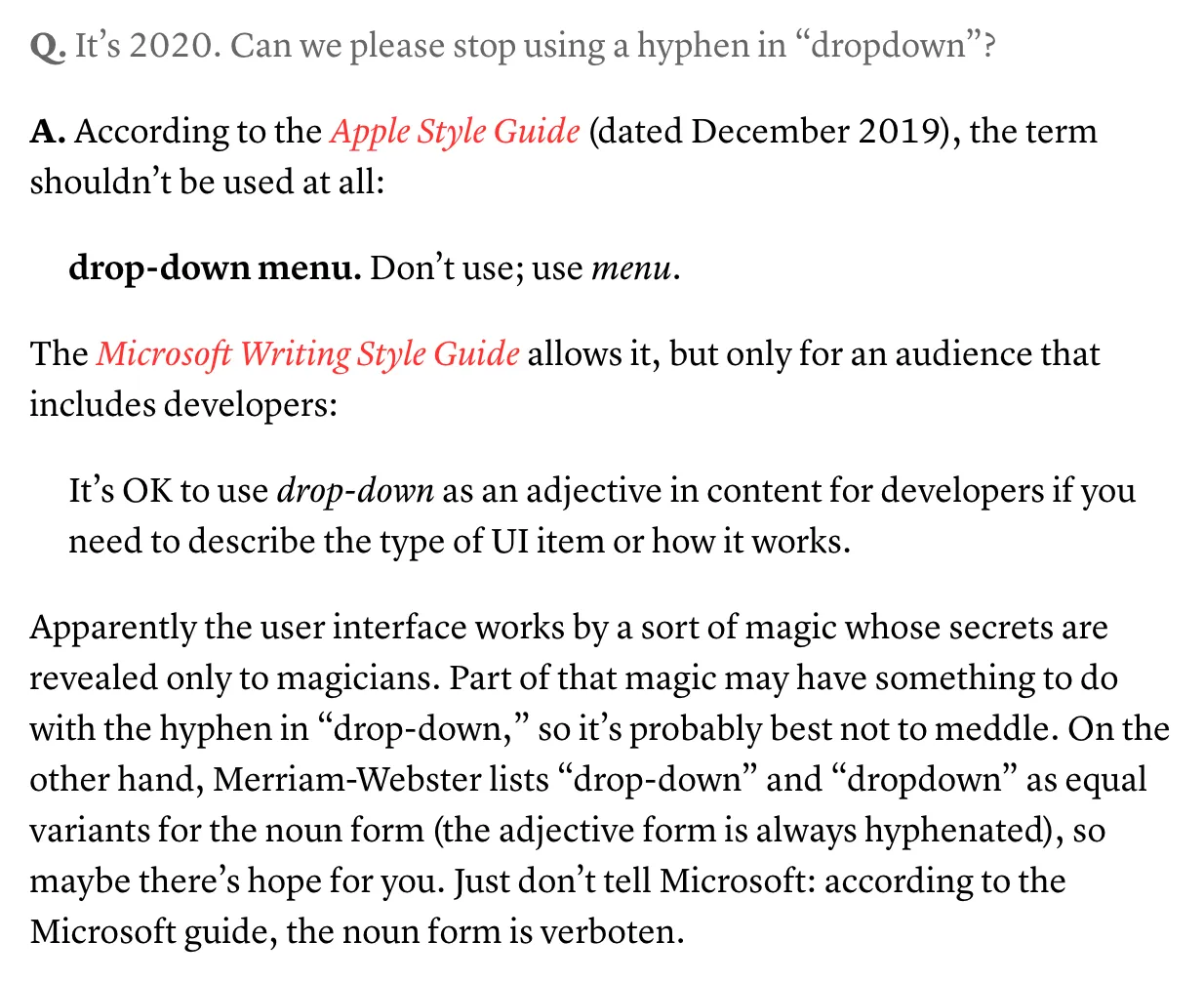
FOTOGRAF JONAS BILBERG
Processtekniker säkerställer kvalitet i produktionen genom att övervaka skärm.
Technical tools to help with spelling, grammar, and style have existed since what feels like the dawn of humanity. We've all used them, at times thanked their makers, and often cursed them for constantly squiggly-red-line-underlining the names of our products.
Grammar differs not only between continents but also between diverse cultures and ages. The same goes for spelling. Style adds both complexity and complicatedness by adding flair and borders to how one writes in relation to circumstance and audience. All of these combined make for an interesting cocktail that can either make your audience understand you perfectly and bless your soul or yawn after reading your first couple of sentences.
This is an interesting article that lists and provides brief reviews of current and popular tools. As you can see, all tools struggle with checking basic grammar or style. They're not perfect, but any extra help can't hurt.
Microsoft have now released Editor, a spelling-grammar-and-style tool. It's worth noting that this application competes with Microsoft's own spelling-and-grammar tool that's built into Word, but that's another matter.
Even though a Technical Writer seems easy to replace with robots, some time will pass before that happens in (truly) professional environments; if not even Apple can get their AI to properly and quickly understand circumstance—which obviously is mind-warpingly difficult to do—human interaction won't soon be dissed.
I use a few tools:
- Merriam-Webster's Dictionary (It's the most well-used and well-maintained dictionary where American English is concerned, I say. This is the only dictionary used by Microsoft in technical communication.)
- Microsoft Writing Style Guide. (Used in all of Snow's technical writing. For an example of its use, check this page to see why we use the word 'select' instead of 'click'.)
- The Chicago Manual of Style Online. It's so comprehensive it hurts. Their Q&A page is always interesting to language geeks. They also make readers consider what to believe, as with Microsoft Writing Style Guide; from the Q&A page:

- ASD-STE100, also known as ASD Simplified Technical English; It helps the reader to pick simple words that are less likely to be misunderstood, for example:

Note: ASD-STE100 is made and maintained by the aerospace industry and contains a lot of words that aren't truly helpful if you're documenting software that isn't about propellers or space. - English Corpora: if you're wondering what 'corpora' means, don't fret; it's the plural version of 'corpus', which is a language resource that consists of a large and structured set of texts that are often used for statistical analysis. In other words, a good English corpus goes a long way in helping us to use words that people will understand today, not a hundred years ago.
After all, a lot of us (myself included) don't use English as our first language.
If you're ever in doubt: ask a Technical Writer. We'll help if we're kind and up for it.
Posted from my blog with SteemPress : https://niklasblog.com/?p=24790